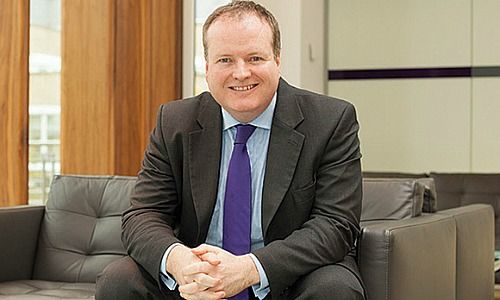Stephen Jones: «Seen Several False Dawns»
Some of investors' worst fears came true this year, and yet financial markets shrugged and moved on. finews.com interviews Stephen Jones, the investment chief of Kames Capital on what that means for 2017.
Stephen Jones, you’re quite upbeat on the global investment outlook. What’s giving you reassurance as an investor?
The surprise in the U.S. with Donald Trump elected President and importantly a Republican administration around him through both houses in Congress reinforces a lighter regulatory, pro-markets, capitalist type approach to things in the worlds largest economy.
That would be liberating both in terms of absolute growth numbers and also of individual situations and stocks as cash is allowed to be repatriated, tax codes are reformed, and some fiscal spending joins the pretty loose and still supportive easy monetary policy.
«The key story is that markets have butted through unexpected events»
I think this sort of unexpected event hopefully causes people to reassess and say, 'OK some of our worst fears have been delivered but not realized.‘ The key story in 2016 is that markets have butted through a number of unexpected events. I think you should view the radical change that we have seen this year and could well see next year as opportunities rather than threats.
That’s likely to play out on what I see as fairly firm foundations, economies have moved away from the crushing deflationary concern that was prevalent earlier on – that’s worth reacting to. So don’t be too safe, move up that risk rung on your own ladder of tolerance.
So the uncertainty linked to Britain following the Brexit vote and Trump’s election don’t concern you too much?
Too much concern and trying to counter those events has been the pattern of 2016 but in the end, markets largely missed them out: markets swooned after Brexit, basically took about 9 hours to get over Trump and didn’t event notice the referendum in Italy.
And in the meantime, economic stimulus has been increased. The Bank of Japan, the Bank of England and the European Central Bank has all said they’re quite happy to run things hot and keep stimulus in place, so the core scenario seems fairly robust. I would acknowledge that the tail-risks around events have got a bit fatter but you can’t live in the tail and the mainstream most likely scenario in this environment is pretty robust at the moment.
What do you think it will take to convert investors’ current extreme reluctance to invest?
I fear that it takes continued gains in asset markets and then it becomes almost the classic tail-end rush in before it becomes really dangerous. That is why as an active manager and as an active allocator, I want to jump in earlier than that. I believe now is that ‚earlier‘ moment.
«After several false dawns, significant change means huge risks and opportunities»
We’ve seen several false dawns, but why are we going to get traction economically and why is this going to be a catalyst this time when other attempts failed?
My answer to that it is that Brexit, Trump, and commodity prices bottoming are all significant regime changes, it is not simply an adjustment of the past that we had previously followed: the U.K. has decided that we’re going to leave the EU, turning over 43 years of social, foreign and economic policy – that has huge risks but also opportunities. Navigating around those is interesting for active managers.
«Investors will move cash for better returns»
One thing that I do think will provide some moves is the steady and rolling imposition of negative interest rates to retail customers cash holdings.
Banks and asset managers have held off quite awhile from doing that, but the road is running out on that, I think. And once one does it, I think others are going to follow quite quickly, so I do think that will prompt some activity. Investors will move cash for better returns.
There’s been considerable criticism of active fund managers versus your passive peers. What’s the value of active investing when I can get a cheaper service from a passive manager?
The facts point to too many in the active management industry not taking enough risk, or not producing an outcome for a customer. Our view very clearly is that you act with conviction having done fundamental research having thought about value. You then construct portfolios with high stock-specific risks and clear regard to objectives and outcomes that customers find attractive. This way, you can produce something different and index-beating over the medium term.
«Not everybody buys low-price, just like some are willing to pay for more expensive shoes, cars, or handbags»
There’s plenty for active managers to do if they do it with conviction. Not everybody buys low-priced fund management approaches, people are willing to pay for different approaches just like they’re willing to pay for different shoes, cars and handbags. There are still people willing to pay more for a defined product other than something that comes out of a spreadsheet tracking the beta.
The other thing I would say is that we have not seen mass-market liquidity really tested by some of these structures now, and it is well-documented that some of the strategies profess to provide instant liquidity greater than the underlying liquidity of some of the investments in the markets they operate in!
Stephen Jones is the chief investment officer (CIO) and member of the executive board at Kames Capital, an Edinburgh-based asset manager. Trained as a lawyer, Jones has worked in finance for a quarter of a century.



























